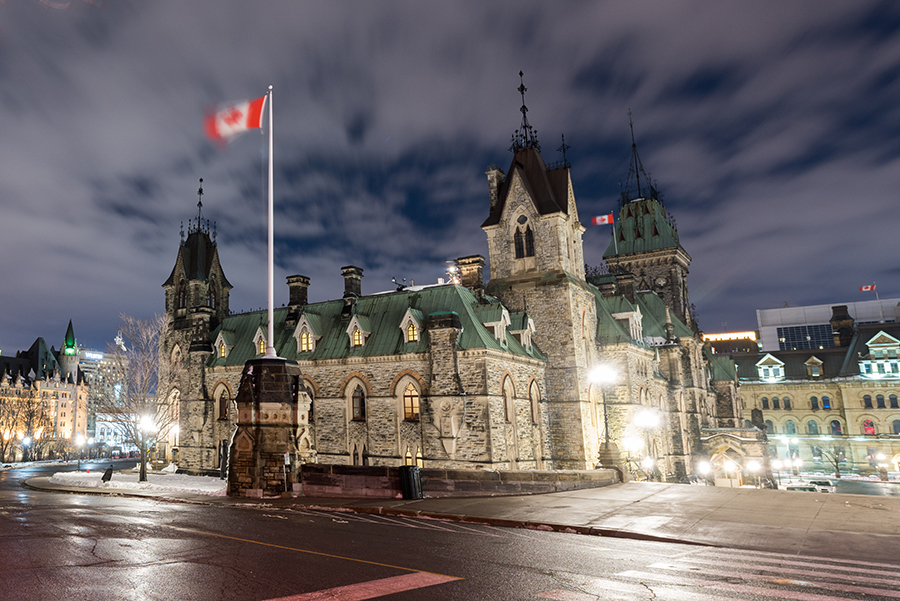National corridor grants shun Alberta
George Lee,
Local Journalism Initiative Reporter
Funding designed to improve the flow of goods and people in Canada has shown no love for nine proposals submitted by the Alberta government.
The National Trade Corridors Fund has so far failed to put money towards the province’s list of highways projects in southern, central and northern Alberta. Unless it is renewed or replenished in Tuesday’s federal budget, the framework wraps up in just under four years. Eight proposal calls are closed.
The province’s submissions would help pay for upgrades affecting Edmonton, Devon, Calgary, Balzac, Grande Prairie, Fort McMurray, Medicine Hat, Lethbridge, Crowsnest Pass, Piikani First Nation, Pincher Creek, Fort Macleod, Taber and dozens of other communities.
Over the years, Alberta’s two most populous municipalities and other applicants from across the country have received good news from the fund. But that’s not how things rolled out for Alberta Transportation and Economic Corridors Minister Devin Dreeshen and his government.
“We’re currently zero for nine,” said Dreeshen, the member for Innisfail-Sylvan Lake.
The federal government’s commitment to roads and highways were hot topics for the Council of Ministers Responsible for Transportation and Highway Safety, Feb. 23.
About two weeks before the council’s Montreal gathering, Federal Environment Minister Steven Guilbeault said that the government will no longer put money towards the building of new road infrastructure. What exists, he declared, is “perfectly adequate” to meet needs.
Guilbeault later walked back the statement to say it is large projects that Ottawa won’t put money towards.
That didn’t calm assembled provincial and territorial ministers as they sought clarity from Pablo Rodriquez, Canada’s minister of transport. Guilbeault’s statements “created a firestorm of questions and expectations right off the bat,” Dreeshen said. “It was a pretty interesting start to the meetings.”
It’s unrealistic and unfair for the federal government to abandon highways in the name of battling climate change, he said. Ottawa has a constitutional obligation to fund First Nations roads, and the National Trade Corridors Fund demonstrates a commitment that ministers thought would continue.
In a response to questions from the Local Journalism Initiative, Rodriguez’s office would not provide detail on the coming Tuesday budget or answer questions about reasons behind the Alberta government’s lack of success.
At the meeting of ministers, Rodriquez “acknowledged the need for more infrastructure and discussed the importance of the National Trade Corridors Fund, which helps fund projects in Canada that include work to airports, ports, railways, transportation facilities and access roads,” Laura Scaffidi, his office’s communications director, said in an email response.
“Our government will work with all provinces and territories to build resilient infrastructure and supply chains across the country, so Canadians can access the goods they need, when they need them, at affordable prices,” Scaffidi said.
The existing program is worth $4.6 billion over 11 years. Commitments so far worth $3.7 billion have been made to 130 marine, air, rail and road projects across the country, the latest information on the federal website says.
Among successes are requests from the governments of B.C., Saskatchewan, Nunavut, Northwest Territories, Yukon, New Brunswick, Nova Scotia, and Newfoundland and Labrador.
The Alberta government’s nine applications add up to $685 million in requests. But since 2022 the province has heard nothing, a ministry spokesperson confirmed for the Local Journalism Initiative.
Two Highway 3 projects in southern Alberta are on the zero-for-nine list. Unapproved for national funding are twinning from Sentinel to east of Highway 507, including the Coleman bypass, and twinning west of Seven Persons to Highway 523 at Medicine Hat.
North of Calgary, an upgrade of the QE II at the Balzac interchange has been neglected so far. Surrounding Edmonton are Anthony Henday Drive upgrades in the northwest and northeast. And two parts of a bypass system near Edmonton International Airport are missing out – Highway 60 in Parkland County serving the Acheson Industrial Park and the middle section of Highway 19 between Devon and the QE-II.
For the Grande Prairie area, unapproved so far from the federal fund are the Highway 40X southwest city bypass and the twinning of Highway 40 from Canfor Road to Township Road 700. In the province’s northeast, the no-hit list features a new alignment of Highway 686 from Peerless Lake to Fort McMurray.
The fund was designed to increase the flow of goods, people and trade; help Canada’s transportation system withstand the effects of climate change and adapt to new technologies and innovation; and address transportation needs in northern communities.
Among approved projects are $39.8 million to the City of Edmonton for a street widening and railway crossing separation project, $50 million to the City of Calgary for road infrastructure near the airport, $50 million to the Montreal Airport Authority for warehousing, road improvements and deck work, and $67.6 million to the Vancouver Fraser Port Authority for roads and railway tracks.
The Northwest Territories government got $37.5 million for a bridge, Gander International Airport Authority got $4.6 million for advanced live seafood storage, and the New Brunswick government got $22.1 million for a bridge replacement to support heavy vehicles on two lanes.
Scaffidi noted that the fund has earmarked dollars for 12 projects in Alberta. She also shared information from two past federal budgets announcing top-ups the national fund.
Budget 2021 added $1.9 billion over four years, and Budget 2022 added $450 million over five years along with funding to advance an industry-driven initiative on the digitization of Canada’s supply chain.
George Lee,
Local Journalism Initiative Reporter
The Macleod Gazette






